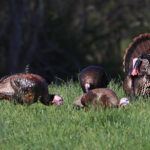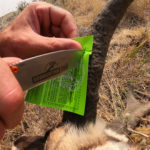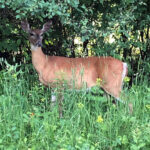As the 2022 whitetail season draws to a close, it’s a great time to look back over the season and reflect on all the highs and lows from the previous months. Sports teams review film after the game to see what could have been done differently, where improvement is needed, and what to work on for the next game.
Hunters should do the same. That’s what the following article is all about. It’s a look back on what I’ve learned from the 2022 hunting season. More specifically, it’s my take on 4 things mature bucks taught me this year.
1. Whitetail Bucks With a "Harem"
This is somewhat controversial. Whitetails are not known to ever have a harem of does. Whitetail bucks will pin down one doe while she is in heat and then move on to the next. One of the bucks I hunted this year seemed to be keeping an eye on, and herding, six does waiting for one to come into estrus.
This was the first year I ever hunted a buck with multiple does in all my years of hunting the rut. It is rare to see. I was never able to harvest this deer, but I noticed and learned a few things from him.
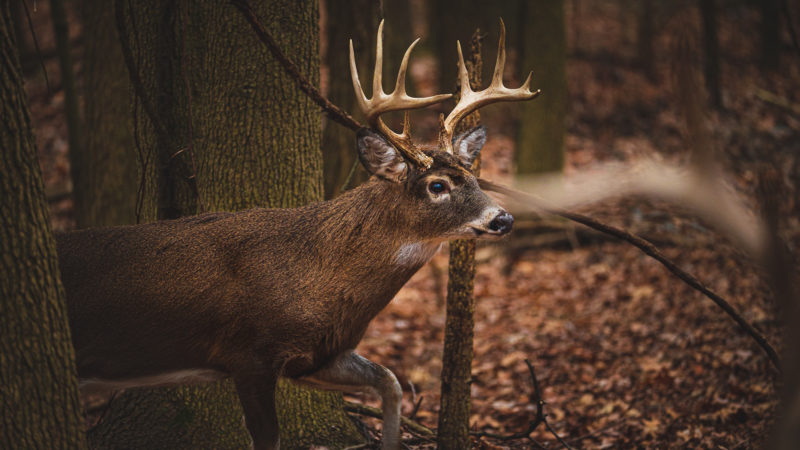
I watched this buck for over 2 hours. He had his harem of does that he was tending to and watching. He allowed spikes and small bucks to be in the same area of the field. This was the second week of November, so the rut was in full swing. The only times that I saw him show any kind of concern was when I challenged him with snort wheezes and tending grunts. Otherwise, he gave no response to calls. He also acknowledged a small buck that bristled for a few moments while walking toward the does.
By watching this deer, I learned how much more vocal a buck will be when tending does. This buck repeatedly grunted and snort wheezed. I concluded that when calling, in order to create a convincing situation for a deer, a mix of buck vocalizations and doe calls is appropriate. It makes a lot of sense, and maybe I knew it before, but I have experienced it first hand now.
2. How Satellite Bucks Help You Locate Mature Deer
I love seeing satellite bucks under my stand. It is fun to watch them try to figure out the hormones they are feeling and wander around as if they forgot something. Young bucks are also a great indicator of where you are in relation to a big mature buck. I have seen that they generally are a few hundred yards from where the action is happening.
This year, I passed many satellite bucks. I have learned that if you are seeing multiple small bucks during a sit, you are likely within 500 yards of a mature buck that has a doe pinned down.
There is no equation that proves this, just experience. In the past, I have seen small bucks all morning and decided to go back to the same location in the evening. I would see the same thing, small bucks. This year I changed that decision, thanks to hunting with a mobile saddle setup, and moved 200 yards upwind from where I encountered the small bucks. Every time I did this, it put me within sight of a mature buck tending a doe.
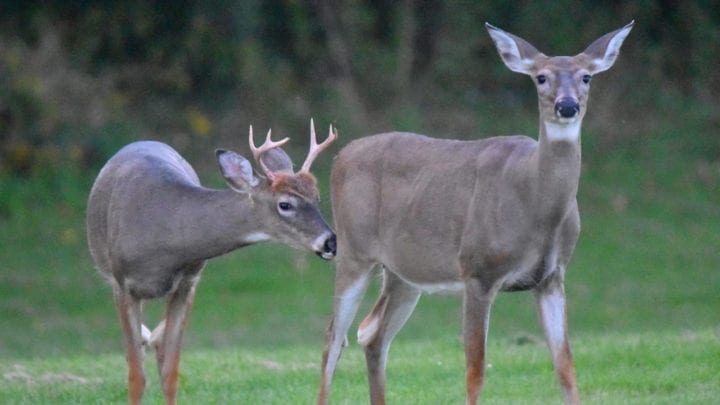
3. Spot and Stalk of Rut-Crazed Deer
Thanks to years and years of watching rutting bucks tend does just outside of bow range, my family has resorted multiple times to spot and stalk.
The bucks don’t think right during the rut. You can get away with far more than you would think, especially if the buck you are hunting is bedded with a doe.
Three conditions make for good stalking:
- Favorable steady wind (blowing scent away and covering noise as you stalk)
- Quiet ground conditions
- Cover for your route to the deer
On a noisy/windy day, we have a good kill percentage with spot and stalk hunting, even on mature deer. We often find these opportunities when we watch a buck bed down with a doe in tall grass.
Being careful with your movement will sometimes mean it takes hours to get within range. Being hasty is how you spook deer. Having a buddy serve as a spotter for your spot-n-stalk approach is a great way to bump up your odds for success as you move in for the kill.
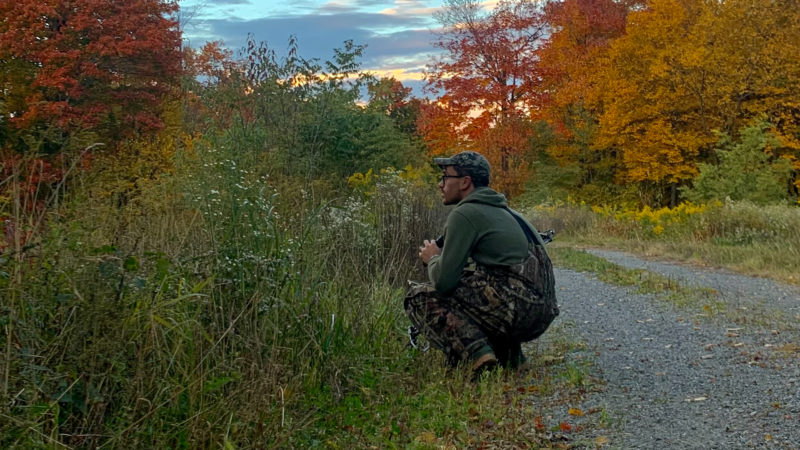
4. Factors That Affect a Buck’s Receptiveness to Calling
Calling works for mature deer. Sometimes.
This year I was able to watch mature deer for longer periods of time than ever before. I was being very picky with the maturity level I was trying to harvest. This is one of the joys of archery hunting. You can learn so much while waiting.
Hearing deer vocalizations in the hunting woods is rare. Rare enough that some hunters will laugh a bit when they see a grunt tube around your neck and a pair of rattling antlers strapped to your pack.
Something I learned this year was how the cover you hunt changes a deer’s receptiveness to calling. You may have experienced this before, but I have called in many bucks to 60 yards or closer just to have them stand and look. After not seeing the movement of another deer they leave.
In heavier cover, deer are much more likely to close the distance and even be more vocal themselves. An example of this was a mature nine-point I was hunting this year that snort-wheezed 3 times and grunted close to a dozen times while tending does in thick cover. The thicker the cover, the more you can call, and, the more likely you are to have positive responses to your calling.
Calling a buck with does is a challenge. They are already happy with what they have. The buck that has a doe pinned down is the least likely to respond to calls. He may change posture, but unless you can convince him without a doubt that you are another buck trying to take his does, your chances are slim. Taking to the ground and setting up a stalk may be in order.
Especially as a younger hunter, I think I overcalled regularly. Especially when a deer was within sight. I have learned, much like turkey hunting, if a buck is interested and moving in your direction, stop calling. Only call when you must to keep him interested.
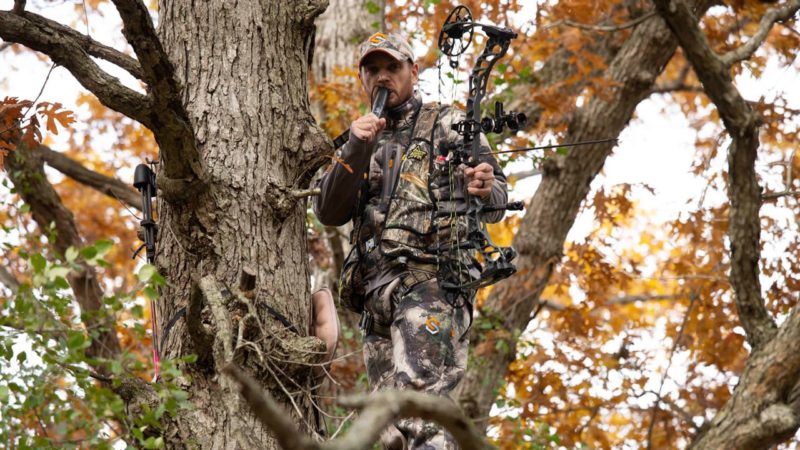
I am sure you probably noticed that I use the words generally and likely in this post instead of certainly and always. The truth is, we are hunting wild animals in a dynamic environment. They change how they move and have different characteristics. Every move we make while hunting is calculated chance.
I hope these patterns I saw and deductions I made from my season armed you with good knowledge that will put you closer to scoring on mature deer in the seasons to come.

 By
By 